
Cubitts makes Redux glasses from waste materials including human hair and potatoes
Corn husks, wool and yoghurt pots are some of the materials used in a series of experimental spectacles by British eyewear brand Cubitts.
London-based Cubitts is exploring more sustainable forms of manufacturing with Redux, a collection of 10 one-off frames each made from a different waste material.
The range includes recycled plastics and bioplastics, with designs made using human hair, potatoes, mushrooms and old CDs.
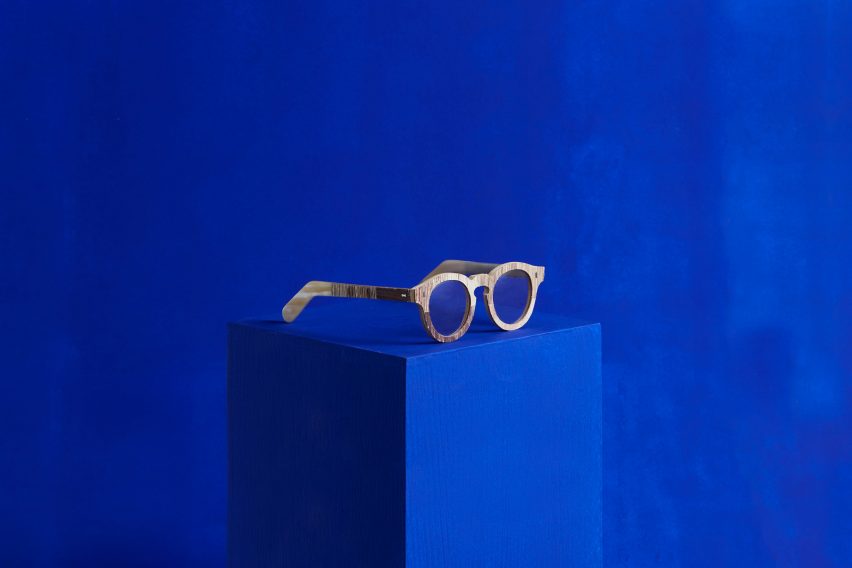
"We've always lamented the notion that once something has no immediate use, it becomes waste," explained Cubitts founder Tom Broughton. "This is as true in the spectacles industry as it is for many others."
"While we've always offered repairs and favoured renewal over replacement, we wanted to go a step further and demonstrate that not only can broken spectacles be saved from the tip, but that the materials found in a tip can become new spectacles," he told Dezeen.
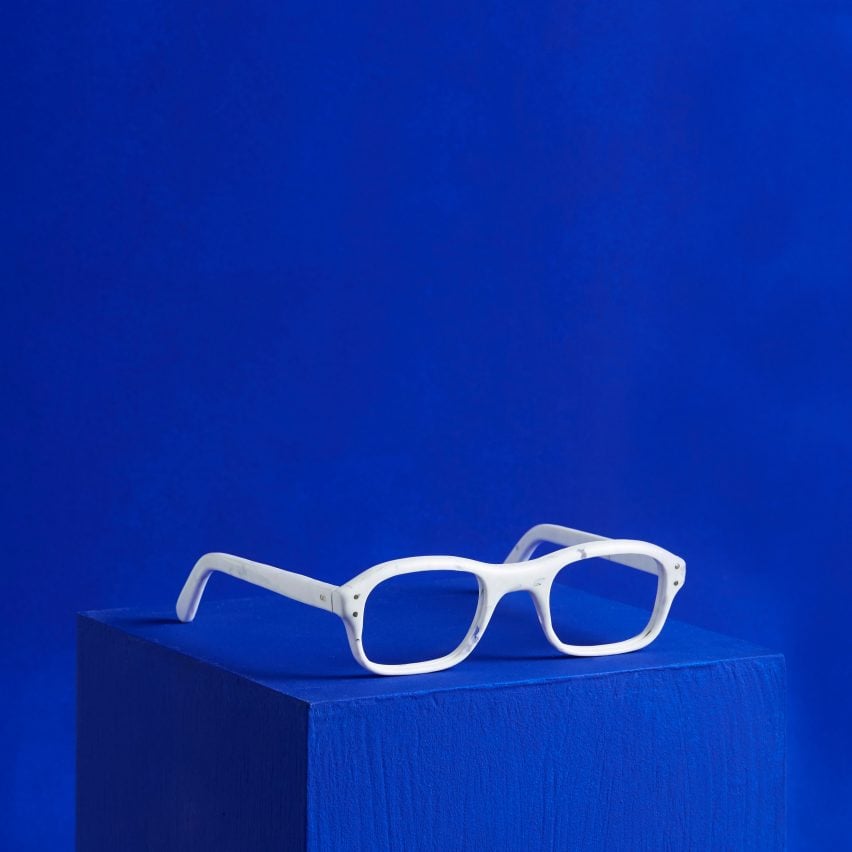
Cubitts usually makes its frames from cellulose acetate. Although this is a semi-synthetic plastic, derived from tree pulp and cotton, its manufacture still has an environmental impact.
Broughton wanted to see if recycled materials could offer the same versatility.
"Any material used in spectacle making needs to be very versatile, with a wide range of properties," he explained.
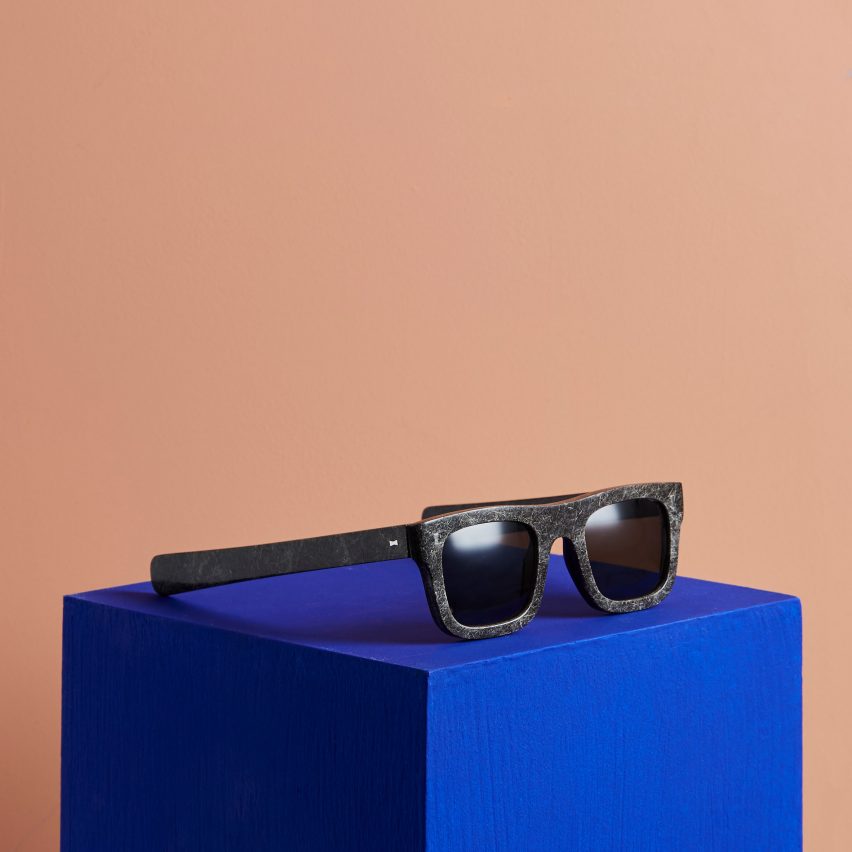
"Not only do you need to be able to mill and form it, but you need to be able to glaze it. It should be light and comfortable enough to wear, it should be durable, and it should look pretty good too," he continued.
"Cellulose acetate is exceptional at all those things, and it can be easily repaired to extend a frame's lifespan. It's tough to compete with that, but we hope to find some worthy competitors."
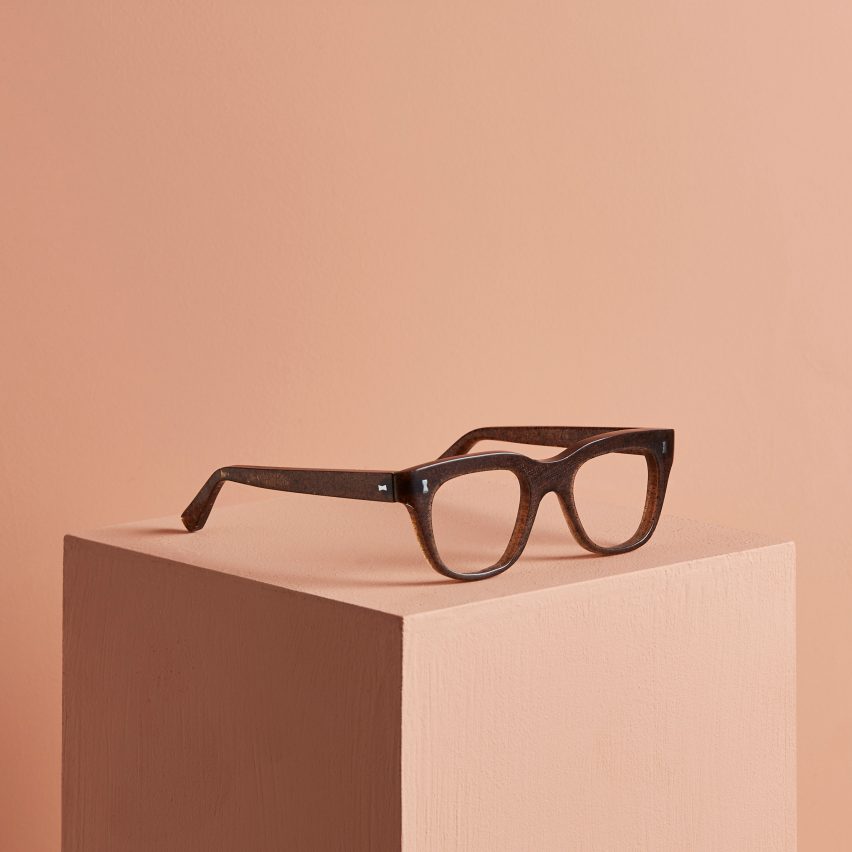
Potatoes were used to create one of the most successful frames. Cubitts worked with Chips Board, a company that produces material using waste supplied by frozen food manufacturer McCain.
"The Chips Board material was pretty fascinating," said Broughton.
"It mills well and has acetate-like properties. And by adding additional ingredients, like coffee grounds, pine flour, or oak shavings, you can add texture and beauty."
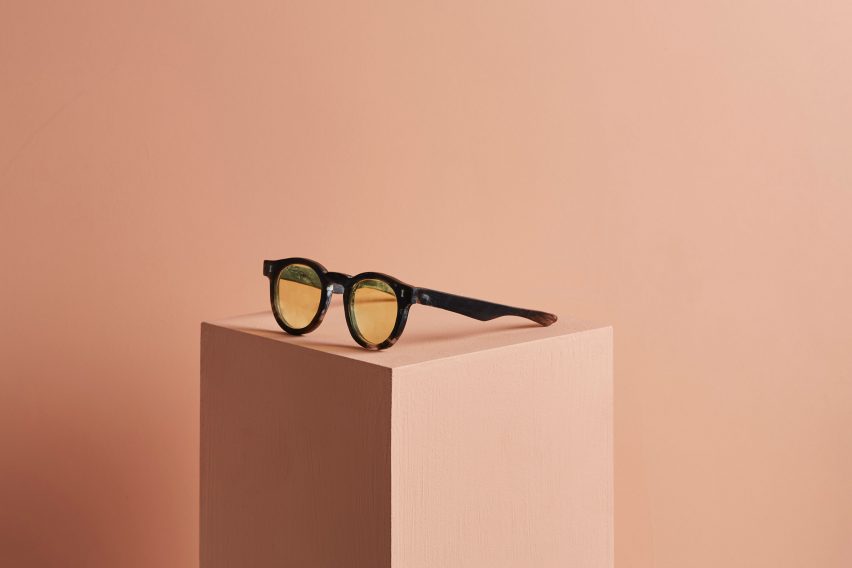
Two of the frames use materials derived from corn.
One is made from Totomoxtle, a marquetry material developed by designer Fernando Laposse using corn husks. The other is made from Nuatan, a biopolymer developed by Crafting Plastics using 100 per cent corn starch.
Human hair, donated by Cubitts staff and their friends, was transformed into a bio-resin to make a dark-hued frame. Another design was created in a similar way using waste sheep's wool, supplied by Devon-based company Solidwool.
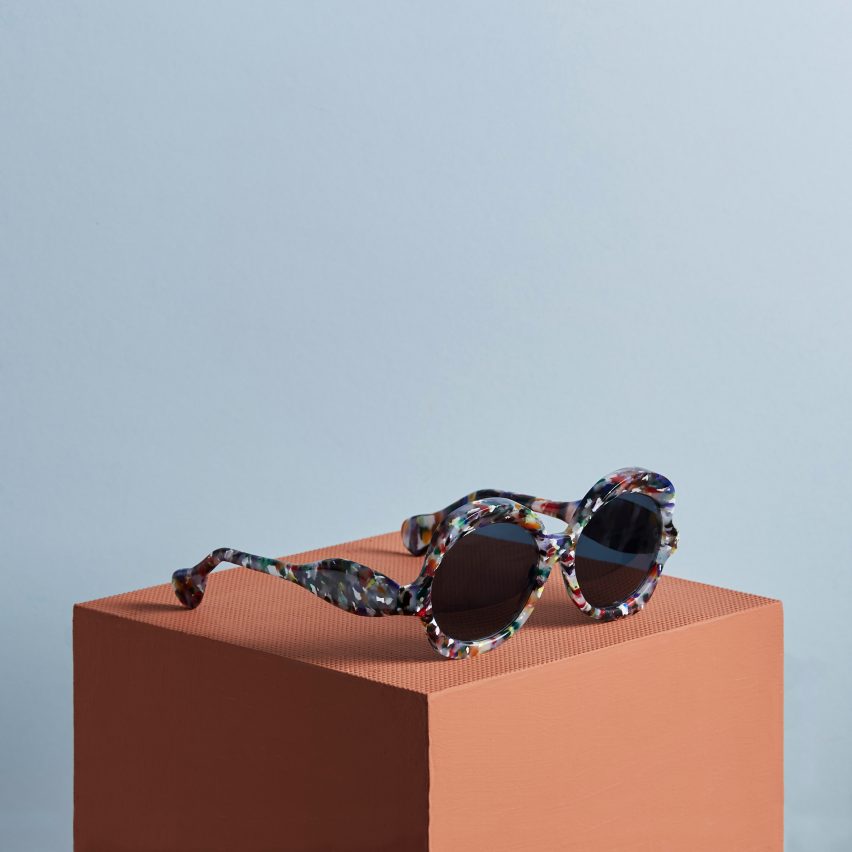
Some of the designs were created from recycled plastic packaging, which Welsh brand Smile Plastics transforms into decorative materials.
One pair is made of Kaleido, a multicoloured material produced from reused food packaging and drinks bottles. Another, noticeable by its white, marble-like finish, is made from yoghurt pots.
A third comes from a mix of packaging and old chopping boards, which give it a distinctive blue colour.
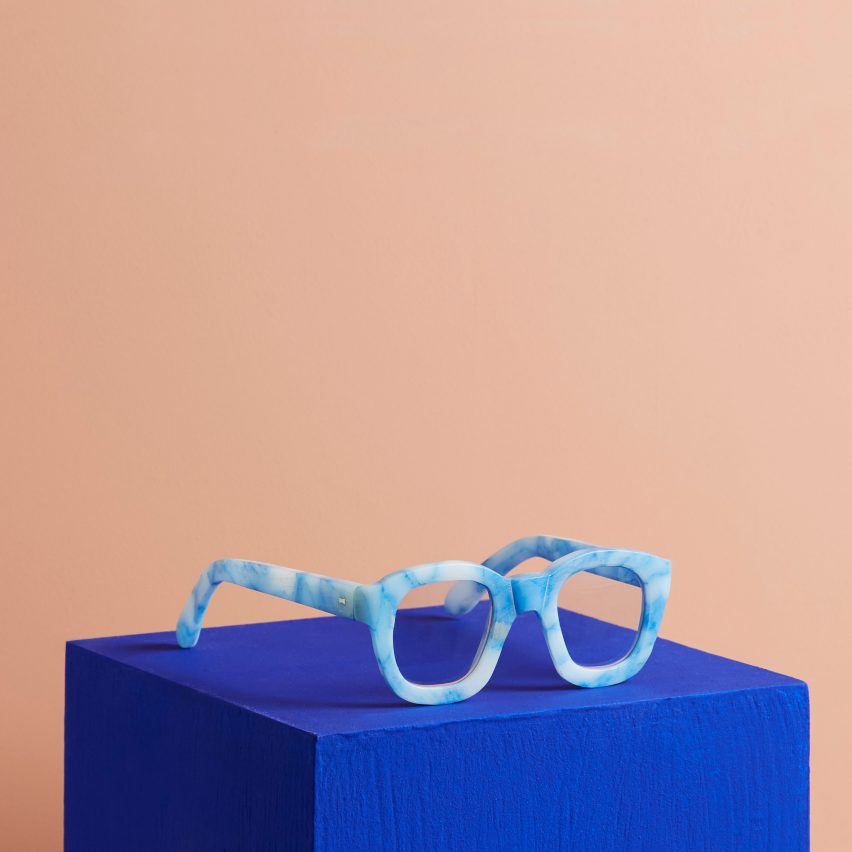
One of the most unusual designs was made from old CDs, which had previously been turned into a slab of material for an exhibition about recycling. Cubitts turned the glittery material into a pair of very round, blocky frames.
The list is completed by a pair made from mycelium, the vegetative part of a fungus. The only design that was grown rather than manufactured, it was created used moulds, with help from specialist designer Jessica Gregory.
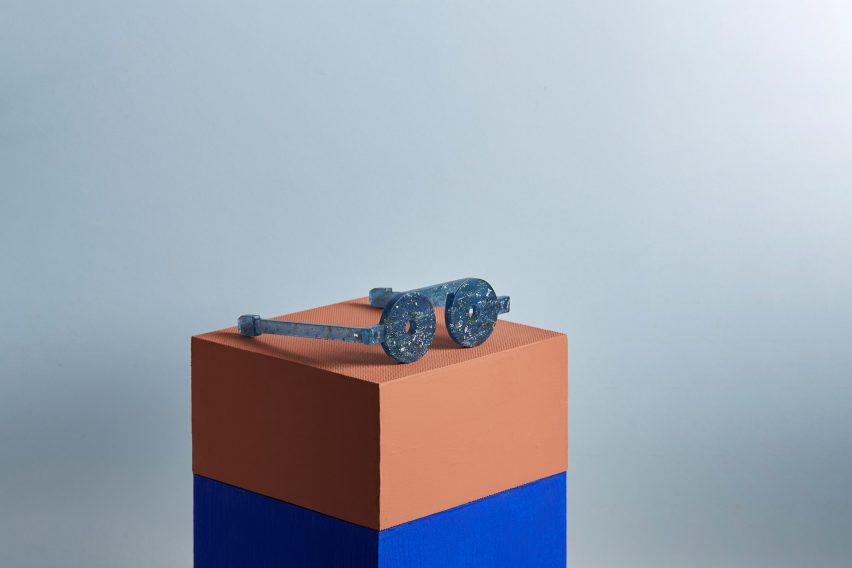
Although these 10 designs are just prototypes, Broughton is optimistic that several of these materials could at some stage be used to produce frames for sale. Cubitts is already producing a range using the wool material.
"If our other materials pass the minimum testing requirements, there's no reason why we wouldn't roll them out into commercial collections," he said.
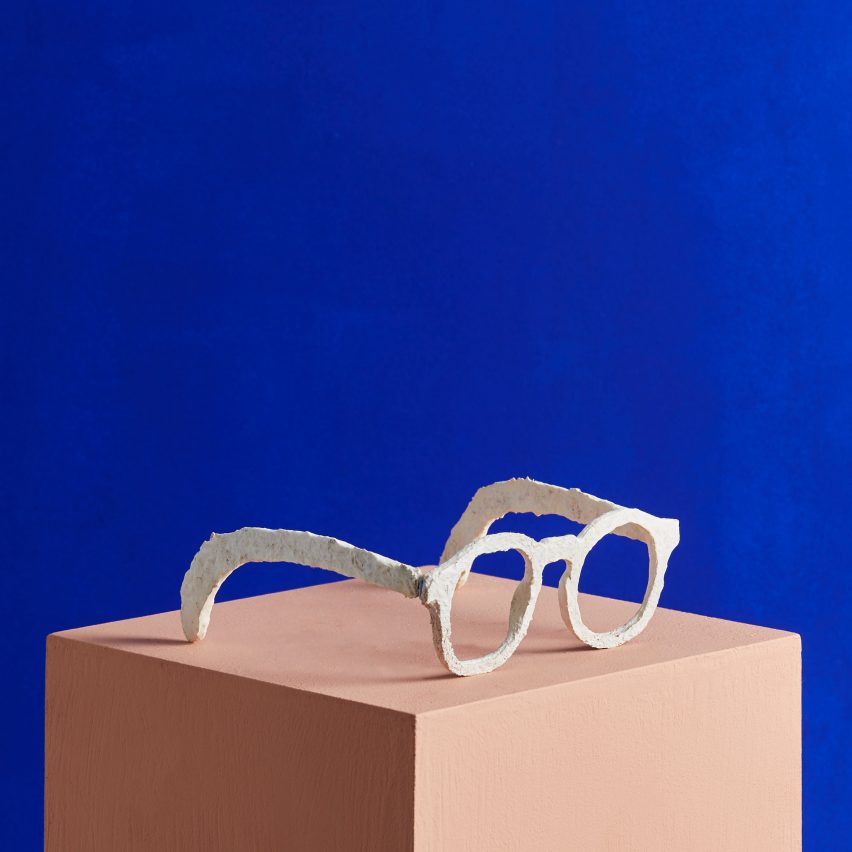
The brand has also been finding other ways to make its operations more eco-friendly. It keeps packaging minimal, with no single-use plastics, and also donates all unused frames to the Kwale Eye Centre in Kenya.